We rarely see the roofs of multi -storey buildings in a big city, but we think about them even less often. But if you decide to build a private house, then the question of what its roof should be is very relevant. So, what types of roofs for private houses exist?
The shape of the roof
What shape the roof of a private house has, plays not only an aesthetic role, but also has a direct effect on the quality of the building of the building and its estimated cost.
- Flat roofs Infrequently you will meet in our cities and villages, they are considered the exotic of domestic private construction. The advantages of a flat roof of one -story house are obvious: these are relatively small costs for materials and work itself, as well as an invaluable opportunity to use such a roof as a terrace, a garden (“green roof”) or even a summer sports ground.
- Single -toe roof – A very convenient constructive solution from the point of view of everyday life. It allows you to make the house lighter thanks to the orientation of living rooms with panoramic glazing on the sunny side. On the opposite side, the economic part is usually arranged (pantries, bathrooms, etc.). In addition, a private house with a single -sided roof is considered a budget option. In addition to residential buildings, roofs are very often plain for outbuildings, time and sheds.
- Gable roof It is considered a classic option. The rafter system of the gable roof makes it possible to evenly distribute the load, without executing excessive pressure on the foundation of the house. Now the frame gable roofs that do not require large labor costs are very popular.
- The attic (broken) The roof makes it possible to additionally use the useful volume of the room located under it. At the same time, the windows can be carried out on the roof facade, and the hatch can be taken to its upper part: it will make your attic so bright and cozy that it will become a full -fledged room.
- Construction Dolm Roof It is quite complicated because it has a whole rafter system.
- Sertone roof – These are four isosceles triangles connected at the top point. Such a roof is ideal for a square house, because it is symmetrical.
- Dome roofs Used for the construction of private houses is extremely rare.
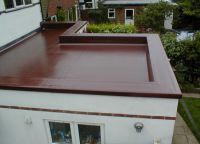
|
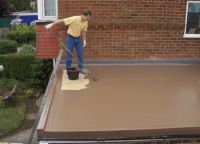
|

|

|

|

|

|
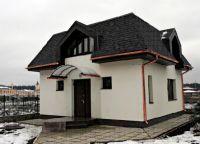
|
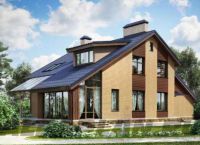
|

|
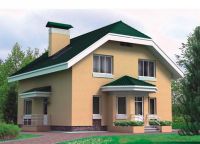
|

|

|
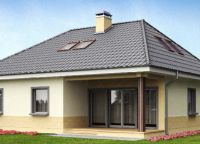
|

|

|
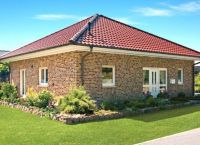
|
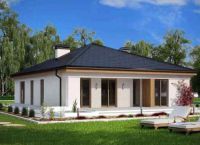
|

|

|
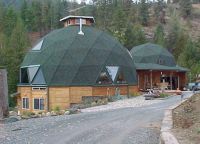
|
Types of roof
The roof and the roof are not the same thing. If the roof is directly the upper part of the structure of any building, then the construction term “roof” means the external material of the coating itself. In other words, this is the upper part of the roof that performs protective heat and waterproofing function.
The most common types of modern roofing materials are:
- Wood: Dranka, Gont, Lemch;
- sheet materials: slate roof, galvanized metal tiles, steel folding roof, euroshifer;
- Pitty roofing material: ceramic, composite or flexible (bitumen) tiles, shale roof.
Roof color
When planning construction, the selection of the color scheme of the roof is very important. It should be harmonious, without creating a contrast with the color of the facade of the building itself. In addition, the choice of roof color will help to hide the flaws of the construction of the house and emphasize its advantages. For example, the black color of the roof can be used to make a tall house visually smaller and wider. Terracotta or gray shade will emphasize the simplicity of classical architectural performance. Blue, green or red tile for the roof will look better with a lighter facade. The white roof looks very stylish, but yellow spots can appear on it over time.
And the last: before the purchase of roofing materials, ask local law. The fact is that in some regions the choice of color for the roof of private houses is regulated by the relevant law that does not allow the use of some shades.
